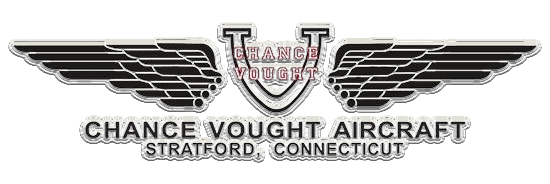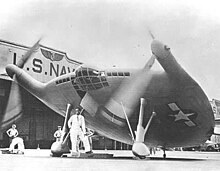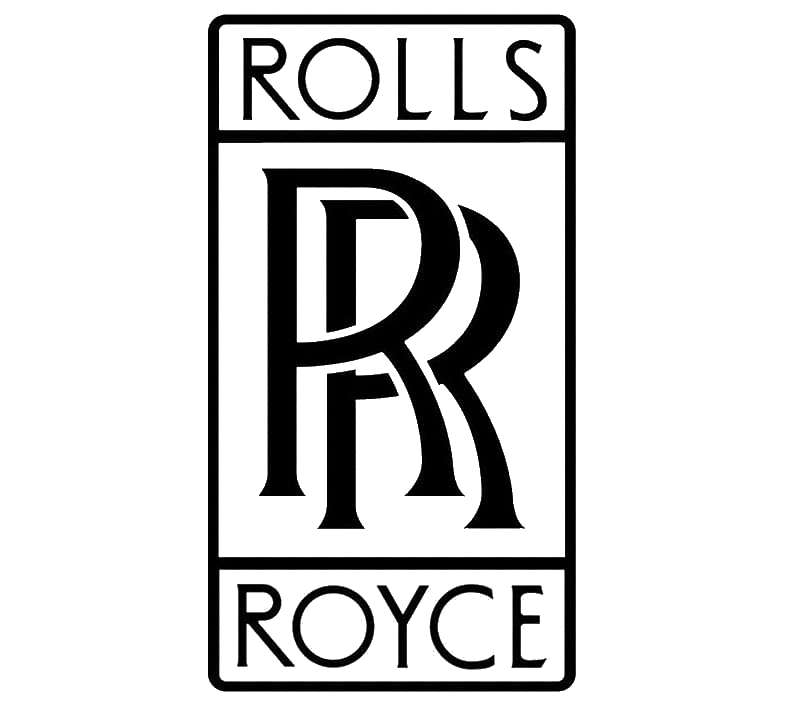Ling-Temco-Vought Vought V-173 Pancake
 |
|
| General information | |
|---|---|
| Type | Fighter |
Manufacturer Vought
First flight 23 November 1942
Retired 15 March 1947
Number built 1
Developed into Vought XF5U
.
History Ling-Temco-Vought
Vought V-173 Pancake
Status Cancelled 17 March 1947
Primary user United States Navy
Number built 2

The Vought V-173 "Flying Pancake" was an American experimental test aircraft built as part of the Vought XF5U program during World War II.
Both the V-173 and the XF5U featured an unorthodox "all-wing" design consisting of a flat, somewhat disk-shaped body (like a pancake flying, hence the nickname) serving as the lifting surface. Two piston engines buried in the body drove propellers located on the leading edge, at the wingtips
In the 1930s, Charles H. Zimmerman was a noted aeronautical engineer who advocated the concept of "discoidal" aircraft, the so-called "Zimmer Skimmer"[3] and worked on a variety of projects on his own and with the Vought company. After testing using scale models, including a remotely controlled, electrically powered large-scale model, designated the Vought V-162, the US Navy approached Zimmerman and offered to fund further development. Data and concept documentation was given to the Navy in 1939, with wind tunnel tests on full-scale models being completed in 1940-1941.
The original prototype, designated the V-173 (Flying Pancake), was built of wood and canvas and featured a conventional, fully symmetrical aerofoil section (NACA 0015). Designed as a "proof-of-concept" prototype, the initial configuration V-173 was built as a lightweight test model powered by two 80 hp (60 kW) Continental A-80 engines turning F4U Corsair propellers. These were replaced by a pair of specially modified 16 ft 6 in three-bladed units. A tall, fixed main undercarriage combined with a small tailwheel gave the aircraft a 22° "nose-high" angle.

The disc wing design featured a low aspect ratio that overcame the built-in disadvantages of induced drag created at the wingtips with the large propellers actively canceling the drag-causing tip vortices. The propellers were arranged to rotate in the opposite direction to the tip vortices, allowing the aircraft to fly with a much smaller wing area. The small wing provided high maneuverability with greater structural strength. The empennage consisted of two vertical fins with rudders, all-moving stabilizers with anti-servo tabs, and two large elevator/trim surfaces on either side of centerline on the trailing edge of the wing planform.

0
KmCeiling
0
KmCombat RANGE
0
Km/hAircraft Speed
0
Max Crew
Photo Gallery
Ling-Temco-Vought
Vought V-173 Pancake


Ling-Temco-Vought
Vought V-173 Pancake
General Info
-
-
- Crew: 1 pilot
- Length: 28 ft 7 in (8.73 m)
- Wingspan: 32 ft 6 in (9.91 m)
- Height: 14 ft 9 in (4.50 m)
- Wing area: 475 sq ft (44.2 m2)
-
Powerplant
- Empty weight: 13,107 lb (5,958 kg)
- Gross weight: 16,722 lb (7,600 kg)
- Max takeoff weight: (8,533 kg)
- Powerplant: 2 × Pratt & Whitney XR-2000-2 radial engine, 1,350 hp (1,007 kW) each
-
-
Performance
- Maximum speed: 452 mph (727 km/h, 393 kn) at 28,000 ft (8,500 m) (estimated)
- Stall speed: 20 mph (32 km/h, 17 kn)
- Range: 710 mi (1,142 km, 620 nmi)
- Service ceiling: 34,500 ft (10,516 m)
Links to Youtube & Others
The MB-339 was developed during the 1970s in response to an Italian Air Force requirement that sought a replacement for the service's existing fleet of Aermacchi MB-326s.
Ling-Temco-Vought
Vought V-173 Pancake
An Aermacchi MB-339 jet had just taken off in formation to head to Vercelli, where it should have perform an aerial exhibition.
Youtube Link
Learn all about the Aermacchi MB-339 with Curator of Aviation Eric Boehm.














